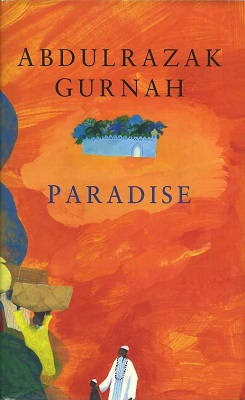
The representation of Suttee, or widow burning by an Indian artist working for British clientele, dated c. 1800. Europeans considered Sati as the absolute scourge, leading them to understand Indian society as notoriously cruel. British government saw the banning of Sati (wherein Indian initiative was nothing less than that of key importance) as the triumph of its civilizational values— the ultimate gift to downtrodden native womenfolk. In reality, however, women’s question was rather marginal to colonial overtures on Sati, which were aimed more towards the domination of Indian life and culture.
Eighteenth century was a global age for Britons: the burgeoning British Empire made it possible for them to travel and produce verbal and visual narratives of the sites visited, that in turn, came to inspire their compatriots at home to venture out, enamoured by the lure of new sights, senses, and tastes. This lure hardly just experiential; the material dimension of travel and settling in alien lands was not lost on the British. New places brought them new opportunities of livelihood, social status, and not to forget, cultural and intellectual capital. While novel geographies altered Britons, impacting their health, habits, lifestyles, and even personal relationships, they gave their imperial presence meanings in ways that suited their own ideas of self and identity. As a result, visions of no man’s land, savagery, adventure, discovery, and civilization were conjured, that validated Britons and their actions with regards to the vistas they found themselves in.
As historian Dror Wahrman has pointed out, the latter half of the eighteenth century saw the emergence of gender distinctions that we now understand as normative. An important factor that warrants an equal consideration is that of the idea of race. The confluence of race and gender in this period was crucial to the formation of standards of masculinity and femininity and the limits of those. Empire was a driving force in this process, and the notions of the feminine or masculine had come to be defined and determined by the dynamics of power and differentiation. Imperialism brought into sharper relief the ideas of gender and gender-based roles considered (or not) as appropriate. Empire was a gendered business and its attitudes reflected back on a world brought closer through movements of goods, peoples, services, plants, and animals, based again on imperial nodes and networks. The results, however, more often than not, were those of estrangement, violence, decay, and destruction.
The ideas of virgin, feminized lands to be controlled by European male explorers, visions of the exotica surging an erotic charm, and of lascivious, local women with insatiable sexual appetites leading the vanguards of empire astray— became parts of the imperial imaginary. When it came to British women abroad, their potential was discernible from the very outset. Empire gave them the opportunity to ‘man-up’ and take charge in a manner that often would not be possible at home. Managing large households teeming with native servants, British femininity got a first-hand taste of what it meant to keep together and rule an empire. Women got to become domestic goddesses, embodying marital loyalty and the charisma of virtuous motherhood as bearing and rearing generations of imperial statesmen.
British women were also proud of themselves as ‘free’, unlike their counterparts in eastern despotic lands who were castigated as backward, downtrodden, and unfortunate victims of their own societal conditions. These assertions came at a time when British administrators were confronted with resistance from native female rulers and stateswomen who, in contrast to British women, enjoyed real socio-political power. The idea of colonized women as inferior, in fact, was part of limiting their agency. It enabled the British to exploit the sexual, maternal, diplomatic, and political labours of their native partners and concubines, known as bibis in India. Children born of such unions were taken and shipped away to be raised as British, while their mothers faded away into obscurity, having almost never been acknowledged publicly in the first place.
Native men were also entrapped within the hierarchies of race and gender. While the African hypermasculinity baffled Europeans, to British artists like William Hodges, Indian men looked like tender females with slender bodies. British idea of colonial masculinity veered constantly, according to their interests of imperial power and authority. For example, Belligerent native rulers were viewed as tyrants and those whose kingdoms were taken over by Britons were deemed as meek, effeminate and inept, in early colonial India. In the later period, criticism of colonial administrators became a mark of effeminacy while fighting on the British side signified true-blue martialness. British manhood was forged in the crucible of empire; its representation extending beyond war and administration on to the pursuits of pleasure, sports, and cultural refinement.
Although largely denied, empire remains at the heart of our existence. As we understand gender as a socio-cultural construct, it is imperative that we acknowledge how imperialism is an inextricable component of the social and political order in question. This, in turn, would help us evaluate how gender bias is ultimately connected to a discriminatory schema that has benefitted and unfortunately, still benefits some parts of the world at the cost of others. The recognition of our imperial inheritance is the way forward as we seek to imagine and build more inclusive, equitable, and above all, humanitarian futures together.

Boating, dated c. 1920, by one of the renowned Indian painters of the twentieth century, Jamini Roy. 1920 was a crucial year in Roy’s career, as he moved from a predominantly Western aesthetic to Indian folk artistic traditions. The painting here is vibrant, in the spirit of celebrating the Indian everyday life. The centrality accorded to three women in the image (with one of them raising a finger, perhaps a sign of her esteem) is worthy of note.
Dr. Apurba Chatterjee is a Wellcome Trust Research Fellow in Humanities and Social Science at the Department of History, University of Reading. Her present research deals with the visual regime of medicine in late colonial India.
















